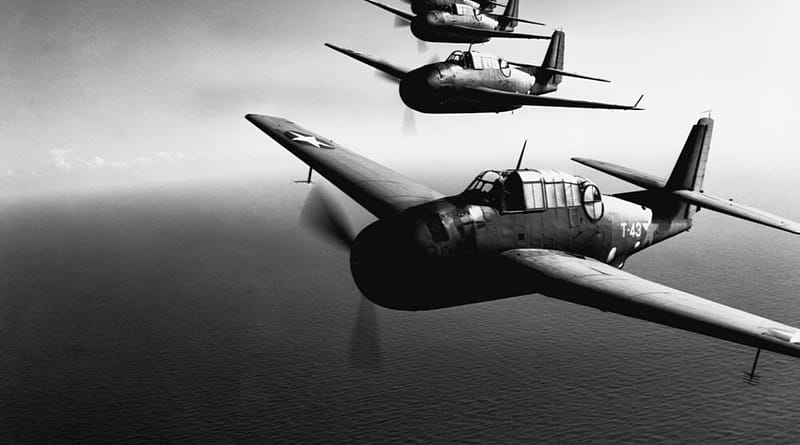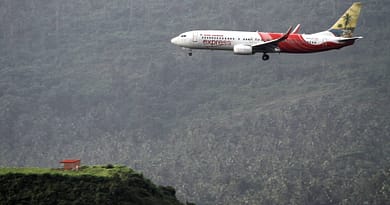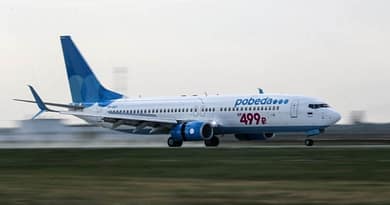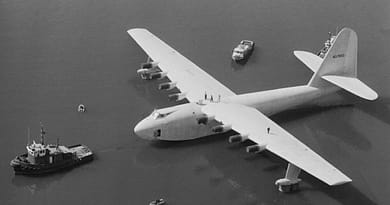The Intriguing Mystery of ‘The Bermuda Triangle’
Some call it a hoax, some just another granny tale, but the ‘Bermuda Triangle’ has fascinated lovers of mystery and intrigue for years. This fictitious triangular area of oceans and islands, running approximately from Florida to Puerto Rico and up to Bermuda, has been the site of scores of vanishing ships and planes.
Let’s take a look at some of the most notable incidents, and see just how mysterious this otherwise innocuous part of the Atlantic Ocean really is.
The Missing Planes
The first aircraft incident in the Bermuda Triangle involved a US Navy PBM3S patrol seaplane on July 10th, 1945. Six hours after leaving the Naval Air Station at Banana River, Florida, the flight radioed one final position report, but was never heard from again.
The same year, in December, five TBF Avengers were lost, along with 14 airmen. Flight 19 was perhaps one of the most well-known incidents and remains the catalyst for the rumors of forces unknown. In fact, later the same day, a Martin PBM Mariner went missing while searching for the lost squadron.
In 1948, the first passenger plane went missing in the area. It was an Avro Tudor IV, registered G-AHNP and operated by British South American Airways. Star Tiger was flying between Santa Maria in the Azores and Bermuda on January 30th when it disappeared without a trace. No wreckage or trace of its 31 passengers and crew were ever found.
Months later, in December, a Douglas DST with three crew and 29 passengers onboard were lost on a trip between San Juan and Miami. Less than a month later, on January 17th, 1949, another Avro Tudor belonging to British South American Airways, Star Ariel, was lost in similar circumstances.
The disappearance of three passenger planes in such a short space of time founded the myth of the Bermuda Triangle. Stories of huge ships going missing in the same area over the previous decades added fuel to the fire. However, since then, disappearances have been limited to small aircraft and military flights.
You would think that, if the Bermuda Triangle really did have a penchant for swallowing up aircraft, airlines would avoid flying in that area. However, checking data from RadarBox.com shows that plenty of aircraft, commercial and private, pass through that area every day, even in these ‘non-busy’ COVID times.

Solving the mystery
There are so many theories regarding why the Bermuda Triangle seems to be such a hotspot for vanishing planes and boats. Science fiction enthusiasts like to believe there is a wormhole in the area, sending vessels to another era, or that aliens like to abduct humans for research from this location.
Slightly more scientific theories have suggested methane gas leaks in the seabed send huge bubbles to the surface, causing explosions that can down a plane or ship before they have time to send a distress signal. Others think epic waterspouts drag planes down, or that electromagnetic interference causes disorientation and an eventual crash.
However, the truth may be a little less glamorous than some might like to think.
Is it just a case of Bad Compasses in Unreliable Planes?
Back when these commercial flights went missing, aviation was a very different ball game. Star Tiger was traveling from London to Bermuda, stopping in the Azores to refuel on the way. The last leg of the journey was the world’s longest nonstop flight at the time, at 2,000 miles. It was a perilous and difficult journey at the best of times, made more dangerous by a number of serendipitous incidents.
Star Tiger departed from the Azores with a known faulty compass and a heater that was temperamental at best. It was already flying at the very limit of its range, and the pilot, fearing the cold, took the decision to fly at just 2,000 feet. This would have burned fuel at a faster rate and such a decision would be unthinkable today.

The faulty compass meant it was approaching Bermuda a little off course. Strong headwinds were noted in the area, which likely added to the plane running out of fuel faster than expected. Flying at such a low altitude would have given the pilot no time to send out a distress signal.
The second incident involving the BSAA Avro Tudor wasn’t flying anything like so low, so what happened there? According to research by the BBC, it could have involved a sudden and catastrophic explosion.
The Star Ariel did have a working heater, but aviation heating technology was in its infancy. Don Mackintosh, a former BSAA Tudor IV pilot, told the BBC, that “The heater bled aviation fuel onto a hot tube – and was also fairly close to the hydraulic pipes.”
A pressure switch should have allowed the heater to operate in flight, but it was notoriously unreliable, so pilots often short-circuited it in order to stay warm. However, the switch also prevented fuel from flowing through, so by disabling it, the pilots could have sealed their own fate. Captain Peter Duffey, a former BSAA pilot, commented, “My theory is that hydraulic vapour escaped from a leak, which got on to a hot heater and caused an explosion.”
While the ruling on both BSAA disappearances is officially inconclusive, these pointers do suggest that perhaps the mystery surrounding the events is not quite as perplexing as first thought.
How many unexplained Cases?
While not every incident in the Triangle can be explained away, most of them, in hindsight, can. The Douglas DST, for example, took off from San Juan with a faulty electrical system. It was 118 lbs over the allowed weight limit. It was sent a message warning that a change in the wind direction could blow it off course.
It was flying with fuel for 7.5 hours of flight and had already been flying for well over six hours when its last transmission was received. Any error in location could have ended up being critical.

Far from disappearing, it is thought that the Douglas may well be at the bottom of the ocean. Divers found the wreckage of a very similar plane not so long ago but have so far been unable to retrieve anything that would indisputably confirm that it is the same plane.
Flight 19, the original mystery of the Triangle, had elements of risk that could go some way to explaining away the missing five aircraft. Charles Taylor, the lead pilot on the exercise, had a history of getting lost in the air, having been rescued in the Pacific twice before. He had more than 2,000 flying hours under his belt, but the other four pilots, all trainees, had just 300 or so.

The last transmission from Taylor is recorded to have said that the squadron was entering ‘white water’ and that ‘nothing seems right.’ It was getting dark, and the weather had closed in on them. If they’d navigated off course or become confused and disoriented, a crash is the most likely explanation.
The TBF Avengers were known to sink within 45 seconds if they crashed in water, which would have taken them far out of reach of search and rescue efforts in the deep Atlantic. Even modern aircraft can disappear in the vast oceans. Take Malaysia Airlines flight MH370 as an example – despite all our modern technology, only small fragments of the huge Boeing 777 have been recovered to date.
As for all the others, to put it in perspective, during the same time frame (the mid-1940s to mid-1980s), many more small planes have crashed on the US mainland than have disappeared in the Bermuda Triangle. However, because the wreckage was easy to find, they were not considered ‘mysterious.’
Elementary My Dear Watson
On February 23rd, 2017, a Turkish Airlines Airbus A330-200, performing flight TK-183 from Istanbul to Havana, had to divert to Washington following a technical problem. While the official line remains that the aircraft had a problem with its left-hand engine that could not be resolved in flight, reports from passengers describe something a little more… mysterious.
Best Guides to Istanbul City Sight-Seeing Tours CLICK HERE
According to reports, as the aircraft entered the airspace known as the Bermuda Triangle, the inflight entertainment screens began behaving oddly. Shortly after, they shut down completely, and then the emergency lighting on the floor unexpectedly lit up.
Istanbul Chamber of Commerce (ITO) President İbrahim Çağlar and his accompanying delegation were on the plane. Çağlar told Turkish publication Hurriyet, “As we were approaching Cuba, the engine malfunctioned on the Bermuda Triangle. Power was cut off inside the plane. Our pilot informed about the fault and announced that we would make an emergency landing in Washington because he was closer. We landed in Washington without any problems. The plane is currently under maintenance. We will move to Cuba as soon as everything is fine.”
(Psst! – Looking for a cheap flight to Instanbul, CLICK HERE to check the cheapest rates directly from hundreds of airlines. JET RADAR scans hundreds of online deals to get you the best fares.)
Thankfully the plane made a safe landing in Washington, on just one engine.
So, in short, that solves the intriguing mystery of the Bermuda Triangle. Or does it not?
What do you think of The Bermuda Triangle – one of the most intriguing stories of Aviation? Please leave a comment.
Many more posts on Aviation History in our History Section. Do you know about the Spruce Goose which flew only once?




